The emotion of the crowd was the inspiration C&G Partners drew on to design “Comeback Season: Sports After 9/11,” the special exhibition at the National September 11 Memorial & Museum. The exhibition explores how sports and athletes helped console a grieving nation, unite the country, and provide a reason to cheer again following the 2001 attacks.
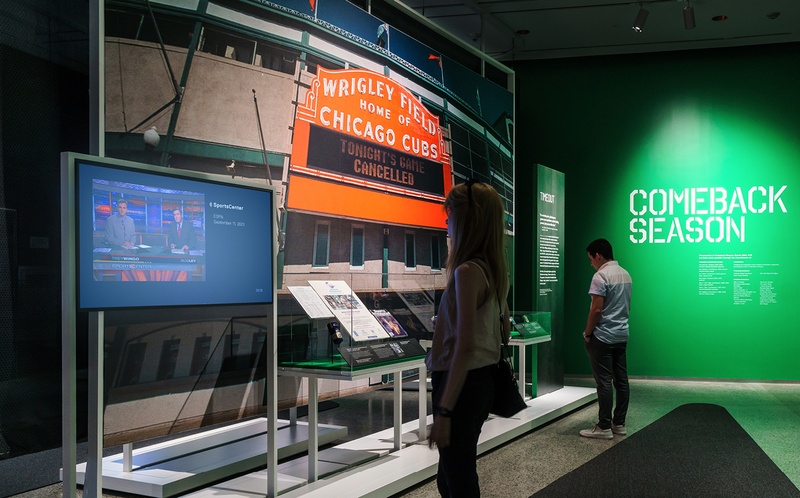
C&G Partners was tasked with the exhibit design, graphic design, and sound and media production for “Comeback Season.” The emotions of sports crowds at various points after 9/11 is an effective way to frame the story arc, using design gestures to take visitors back to those key moments in stadiums and portray the changing emotions of a whole nation.
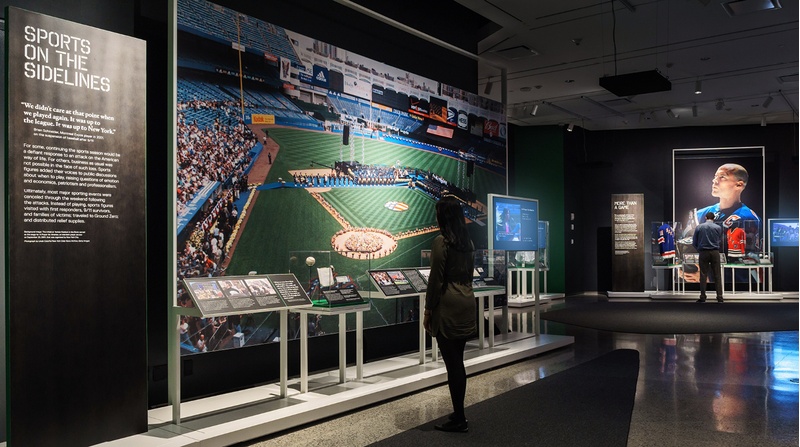
By making visitors feel as if they are actually in those crowds, they experience the profound transition from uncertainty and grief to hope that swept the country in the weeks and months after the attack. Designed as a chronological account, the exhibition begins in the moments after the 9/11 attacks, when all national sports in the US were suspended and stadiums in the New York metro area were used instead to support the relief effort.
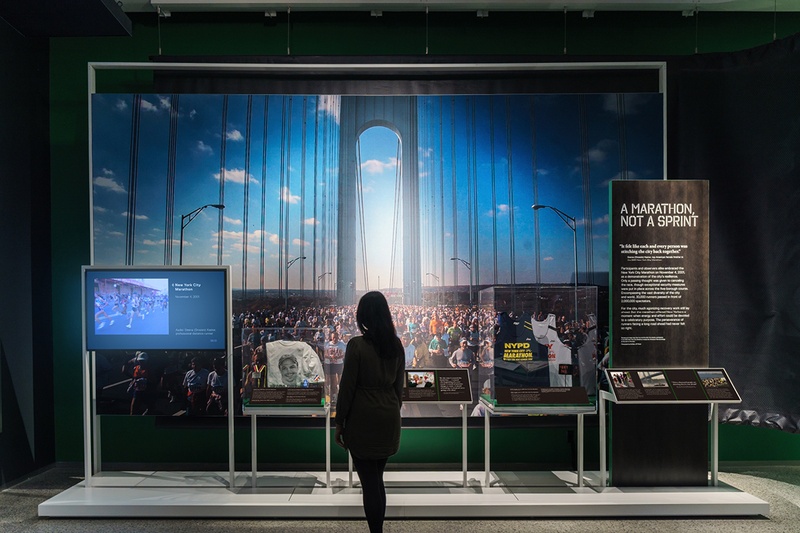
The exhibition is divided into nine sections, with additional stations dedicated to stories of victims and their families. Each section includes dramatically large images, custom short documentaries, objects from the museum’s collection or on loan for the exhibit, and poignant quotes.
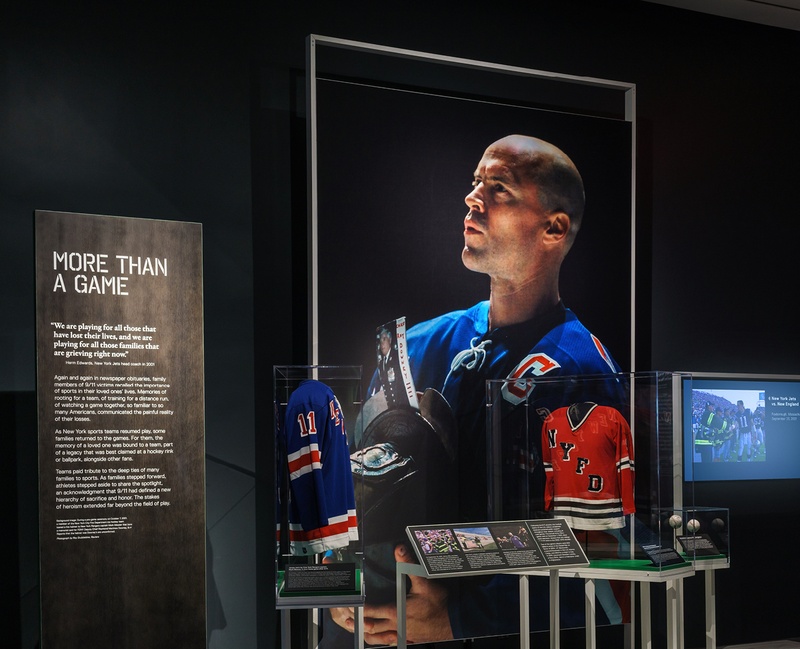
Stories of the bonds between famous athletes, first responders, and the families of 9/11 victims are detailed throughout the emotional exhibition narrative.
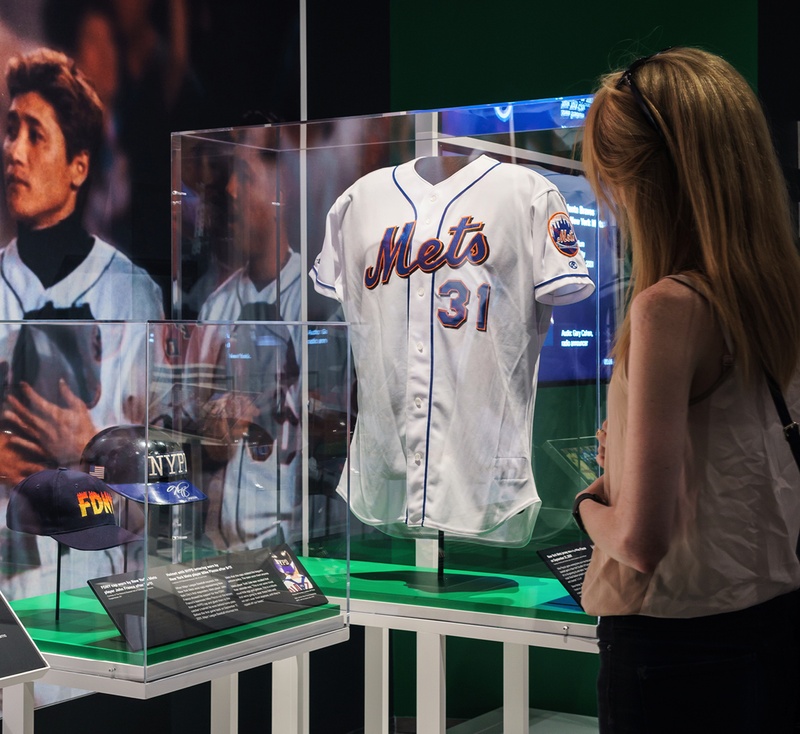
C&G Partners paid close attention to the arrangement of visual, spatial, and material elements of the environment, creating a composition that visitors can easily navigate while maintaining the sequential flow of the exhibition.
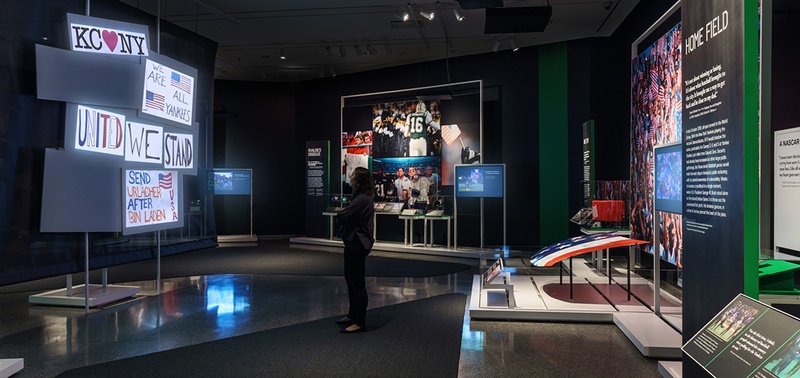
To optimize the space and enhance the exhibit circulation, the gallery space is divided by a translucent scrim which separates the space while maintaining an illusion of openness. Suspended from the ceiling, the scrim is made of a material reminiscent of sports jersey fabric. Graphically-treated images of crowds are printed onto the scrim, using double-sided halftone printing techniques. A varsity-inspired typeface, commonly found in sports stadiums is used in the identity and exhibition materials. The letters appear to be stenciled, similar to those that appear on stadium turf and are reminiscent of “do not cross” emergency warnings to reflect the seriousness of the time. Green is a focal color, alluding to grass in sports stadiums as well as a sign of hope and regrowth.
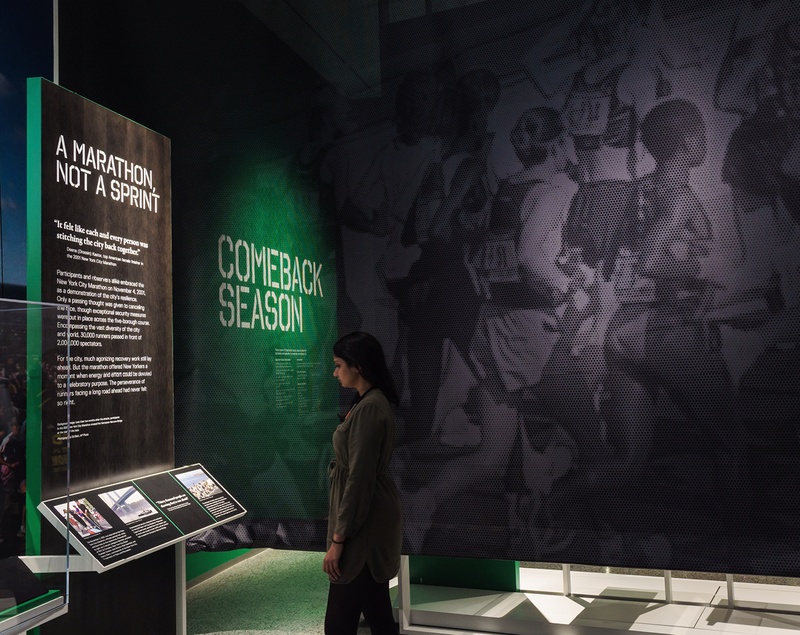
While artifacts play an important role, media is treated as a central exhibition element, providing context and enhancing the narrative. Custom-made short documentaries drawn from oral histories are combined with powerful excerpts from media of the time. An emotive, custom audio score augments the media pieces.
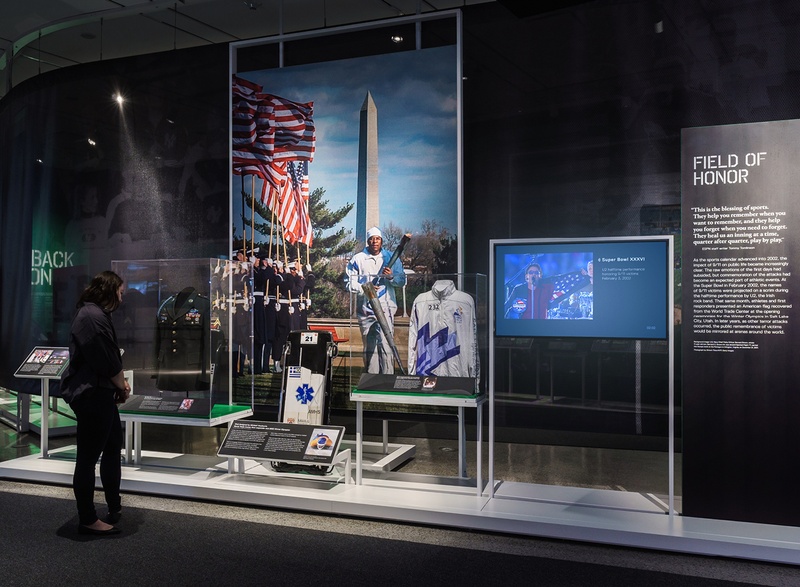
A halftime digital installation is a key exhibition element that focuses on the fans. The large-scale projection map of fan-made ephemera shows the evolution of fan-sentiment in the days, weeks, and months that followed 9/11. Images of homemade fan posters are projected onto three-dimensional panels.
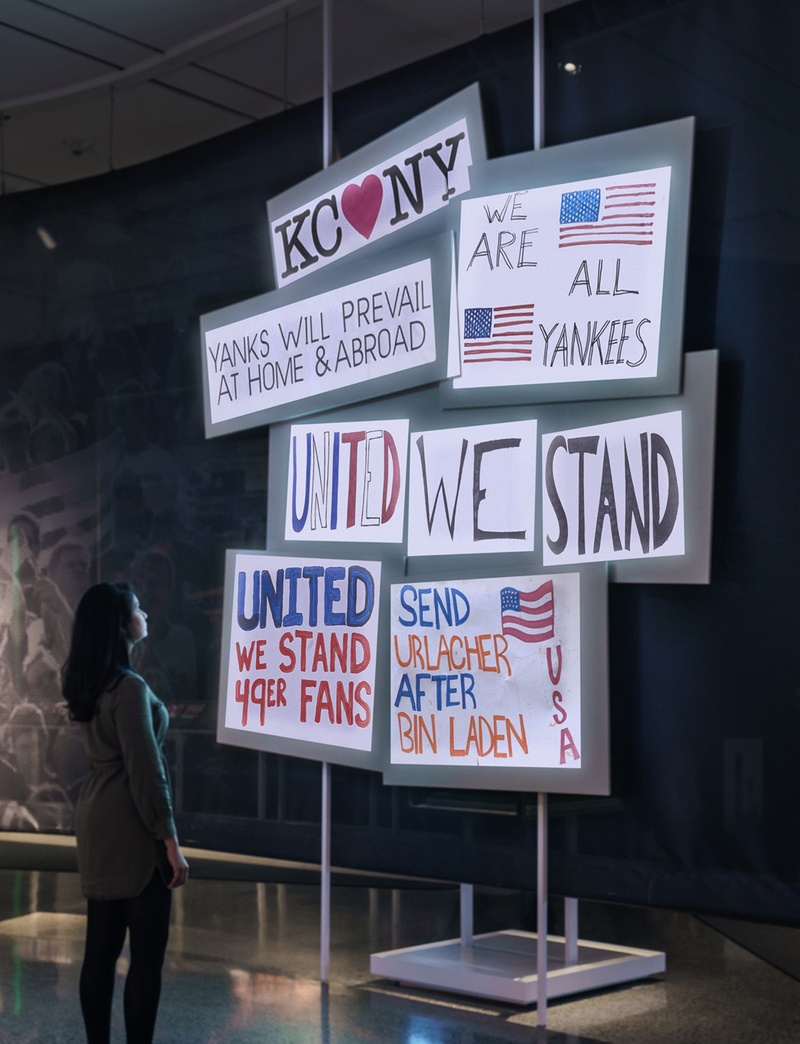
A segment on the CBS Sports radio show “Tiki and Tierney,” featuring C&G Partners’ content developer, Will Twersky, explains origins of the idea for the exhibit—and demonstrates how the powerfully-emotional exhibit brought New Yorkers and the sporting community together.
![C&G Partners [logo]](https://www.cgpartnersllc.com/wp-content/uploads/2022/07/CGP_Logo-black.png)